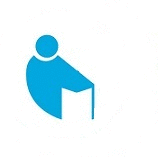Physical therapy for bladder stimulation in spinal cord injury
There are several ways in physiotherapy for patients with bladder and bowel problems, including:
- Electrical stimulation.
- Exercises
- Acupuncture and electro acupuncture.
- Biofeedback
1-Electrical stimulation: there are several methods used of electrical stimulation in neurogenic bladder problems in patients with spinal cord injury according to the types of SCI and bladder problems, in the Alimran Medical Center use two or more combination of FES, IDC, IF, PTNS and Magant therapy.
- Electrical stimulation: there are several methods used of electrical stimulation in neurogenic bladder problems in patients with spinal cord injury according to the types of SCI and bladder problems, in the Alimran Medical Center use combination of FES, IDC, IF, PTNS and Magant therapy.
- Functional electrical stimulation(FES): is a technique that uses low-energy electrical pulses to artificially generate body movements in individuals who have been paralyzed due to injury to the central nervous system. More specifically, FES can be used to generate muscle contraction in otherwise paralyzed limbs to produce functions such as grasping, walking, bladder voiding and standing. This technology was originally used to develop neuroprostheses that were implemented to permanently substitute impaired functions in individuals with spinal cord injury (SCI), head injury, stroke and other neurological disorders. FES is sometimes also referred to as neuromuscular electrical stimulation (NMES), FES has been found to be useful for treating the symptoms of bladder dysfunction, it uses to strengthen the detrusor muscle and prevent urinary tract infections. Rehabilitation medicine scientists have succeeded in developing FES systems that enable certain individuals with SCI to use their paralyzed hands, arms, trunk, leg and diaphragm for functional purpose and gain a degree of control over bladder and bowel evacuation.
- Interrupted direct current (IDC): is used to describe continuous unidirectional current when it is interrupted to give pulses or phases of any duration, shape, or frequency. IDC use in patients with SCI for bladder problems to strengthen the external sphincter muscle.
- Transcutaneous electrical nerve stimulation: Transcutaneous electrical stimulation of the urinary bladder in patients with neurogenic bladder dysfunction improves lower urinary tract function, the technology for stimulation of the sacral roots and various peripheral nerves continues to evolve with promise for an effective neural prosthetic to restore NLUTD. Urodynamic studies executed 2 months after finishing TENS show persistent results, TENS therapy is a safe and effective option in the management of overactive bladder in the pediatric population. However, further randomized studies should be carried out to protocolize and clarify the effectiveness of this therapeutic approach.
- Interferential therapy: The basic principle of Interferential Therapy (IFT) is to utilize the strong physiologic portable IFT effects of low frequency electrical stimulation of nerves without the associated painful and somewhat unpleasant side effects sometimes associated with low frequency stim. The are 4 main clinical applications for which IFT appears to be used pain relief, muscle stimulation, increased local blood flow and reduction of oedema. In addition, claims are made for its role in stimulating healing and repair. In several articles, the effect of IF current on bladder problems in different patients was investigated and the effects of recovery were visible.
- Percutaneous tibial nerve stimulation (PTNS): is a low-risk, non-surgical treatment. PTNS work by indirectly providing electrical stimulation to the nerves responsible for bladder and pelvic floor function. Also, there are several articles on the use of this method to improve bladder and pelvic floor muscle problems and have observed the effects of this method.
- Magnet: A variety of methods using magnetic stimulation devices have been tested to determine whether or not they can improve bowel management outcomes in individuals with SCI, we tested transcutaneous magnetic spinal cord stimulation would improve bladder function in individual with SCI.
2-Exercise therapy in patients with bladder problems and pelvic floor muscles: anti-incontinence exercises emphasize rehabilitating and strengthening the pelvic floor muscles that are critical in maintaining urinary continence. Pelvic floor muscles also are known as levator ani muscles because the function to levitate or elevate the pelvic organs into their proper place. When levator muscles weaken and fail, pelvic prolapse and stress incontinence result.
Pelvic floor exercises, sometimes called kegel exercises, are a rehabilitation technique used to tighten and tone the pelvic floor muscles. Kegel exercises may be performed to eliminate urge incontinence. Contraction of the external urinary sphincter induces reflex bladder to decrease the frequency of incontinence episodes.
3-Acupuncture and electro acupuncture: Acupuncture and electro acupuncture is use to improve bladder and neurogenic bowel problems in patients with SCI. Acupuncture protocol are huatuo brand needles (size 0.45 mm, manufactured by Suzhou Medical Appliance, Suzhou, Jiangu, China) were used. The parameters of electric stimulation were set as follows: continuous wave with electric current frequency of 20 Hz and intensity between 3 and 10 mA according to patients tolerance. Based on the clinical experiences and anatomical knowledge (direct stimulation of S2-S3) of the acupuncturists, bilateral BL32, BL33 and BL35 were used. There has been numerous clinical and experimental studies analyzed the electro acupuncture which effectively improve the urination dysfunction in patients with SCI.
4-demonstrated the role of biofeedback and bowel problems in patients with SCI.
